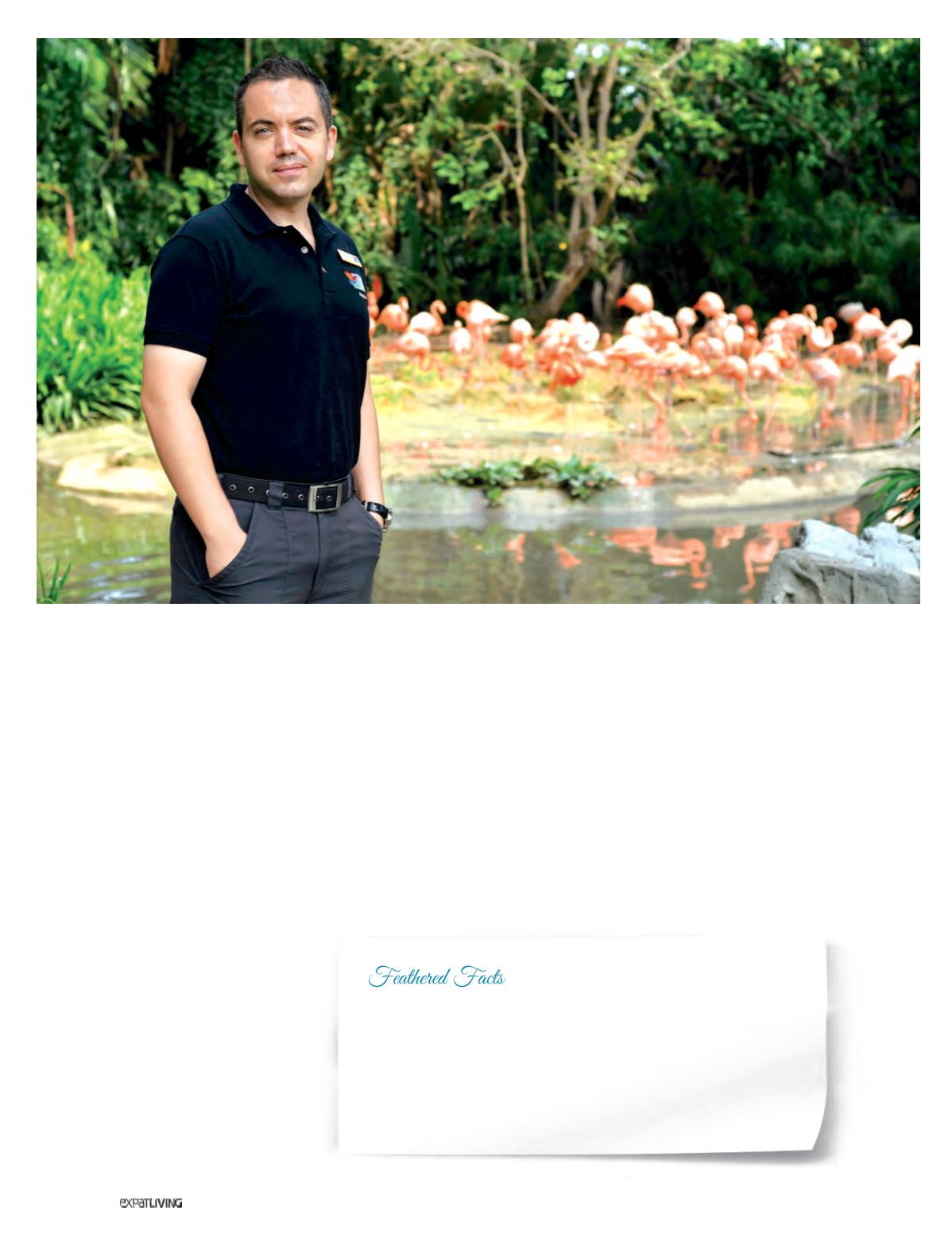

LIFE&FAMILY
136
June14
D
r Luis Carlos Neves feeds a
boisterous, three-week-old
blue-eyed cockatoo through
a syringe in Jurong Bird
Park’s Breeding and Conservation
Centre. Akin to a hospital nursery, with
progress charts and hygiene controls,
the room also has a large glass window
that visitors can peer through. It allows
the public to watch how this captivity-
bred chick, native to the Bismarck
Archipelago, is being hand-reared.
“People say the chicks are ugly, but
I like them all,” says Luis, stroking its
feathers like a baby. He explains that this
tender loving care is part of the Park’s
commitment to maintaining sustainable
bird populations. “We have a hundred
pairs of endangered parrots breeding
in a special closed aviary just behind
here,” he says.
As the Park’s assistant director,
Luis’s love of birds clearly goes deep;
like many of the keepers here, his job
is more a vocation than an occupation.
Born and raised in Portugal, he trained
as an avian and reptile vet and clinical
pathologist. He has been working at the
Bird Park for two years, following a stint
at the Singapore Zoo.
“I always loved birds and always
wanted to be a vet. But I never thought
I’d be working in this place; it’s one of
the largest parks of its kind in the world,
and managing the whole collection is a
dream come true,” he says.
Birds have clearly been a life-long
obsession. With a twinkle in his eye,
Luis explains the mini-bird park he
had as a child. “By the time I went to
university I had about 80 birds in my
garden at home. I started with quails
and doves, and as I grew older acquired
budgerigars and cockatiels. I think my
mother tolerated it because I was an
only child!”
The Park is the largest in Asia, and
with 800,000 visitors a year – many of
them international – it’s a clear favourite
amongst Singapore’s tourist attractions.
“The visiting public are as important as
the birds, and maintaining the quality
of the exhibits and visitor experience is
essential,” he says.
“There are fewbird-only parks left in the
world, and at 20 hectares we are one of
the largest. Sixteen keepers manage the
more than 400 species of birds from all
over the world. These include penguins
fromAntarctica and snowy owls from the
North Pole, but we specialise in tropical
birds from Southeast Asia.”
• At nine stories high, Jurong Bird Park is home to one of the world’s
largest walk-in flight aviaries, Lory Loft. This is a favourite spot to feed
15 species of colourful, gregarious lories.
• The Park’s 30-metre waterfall is the world’s tallest man-made waterfall
in a walk-in aviary, and was visited by Queen Elizabeth II in 1972.
• In the Breeding and Conservation Centre, a monitor shows a live feed
of activity from the nests in the breeding area (which is not accessible
to the public).



















